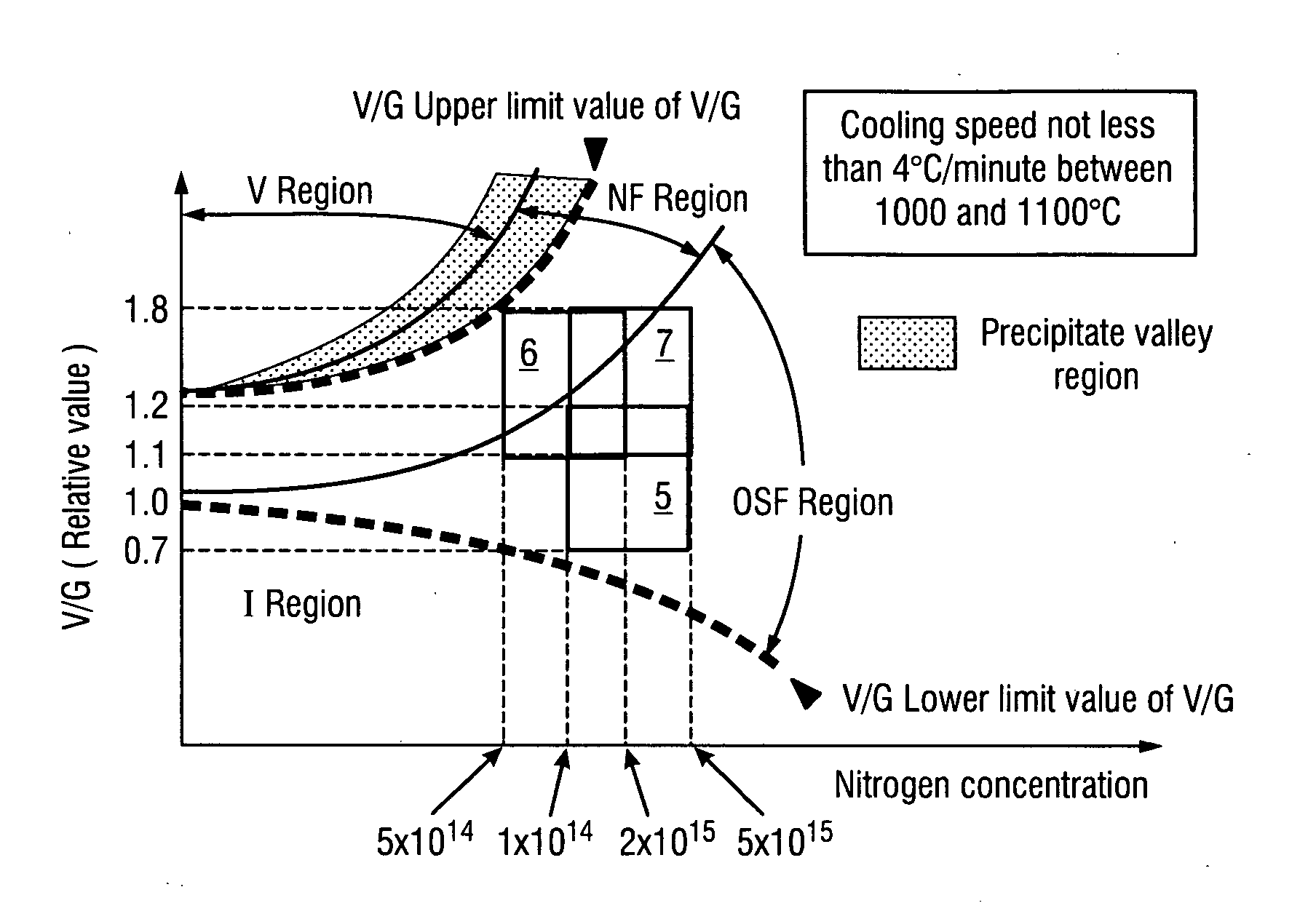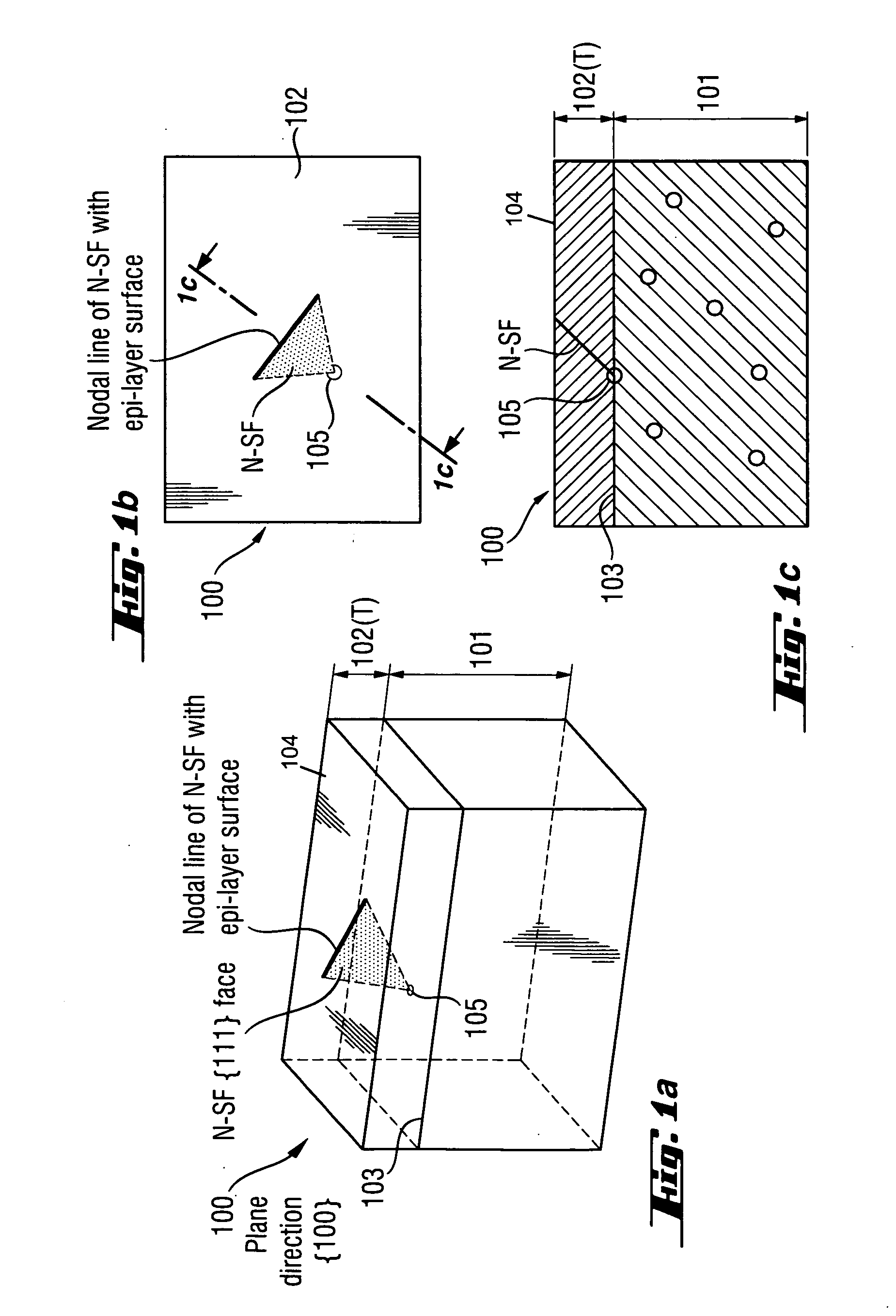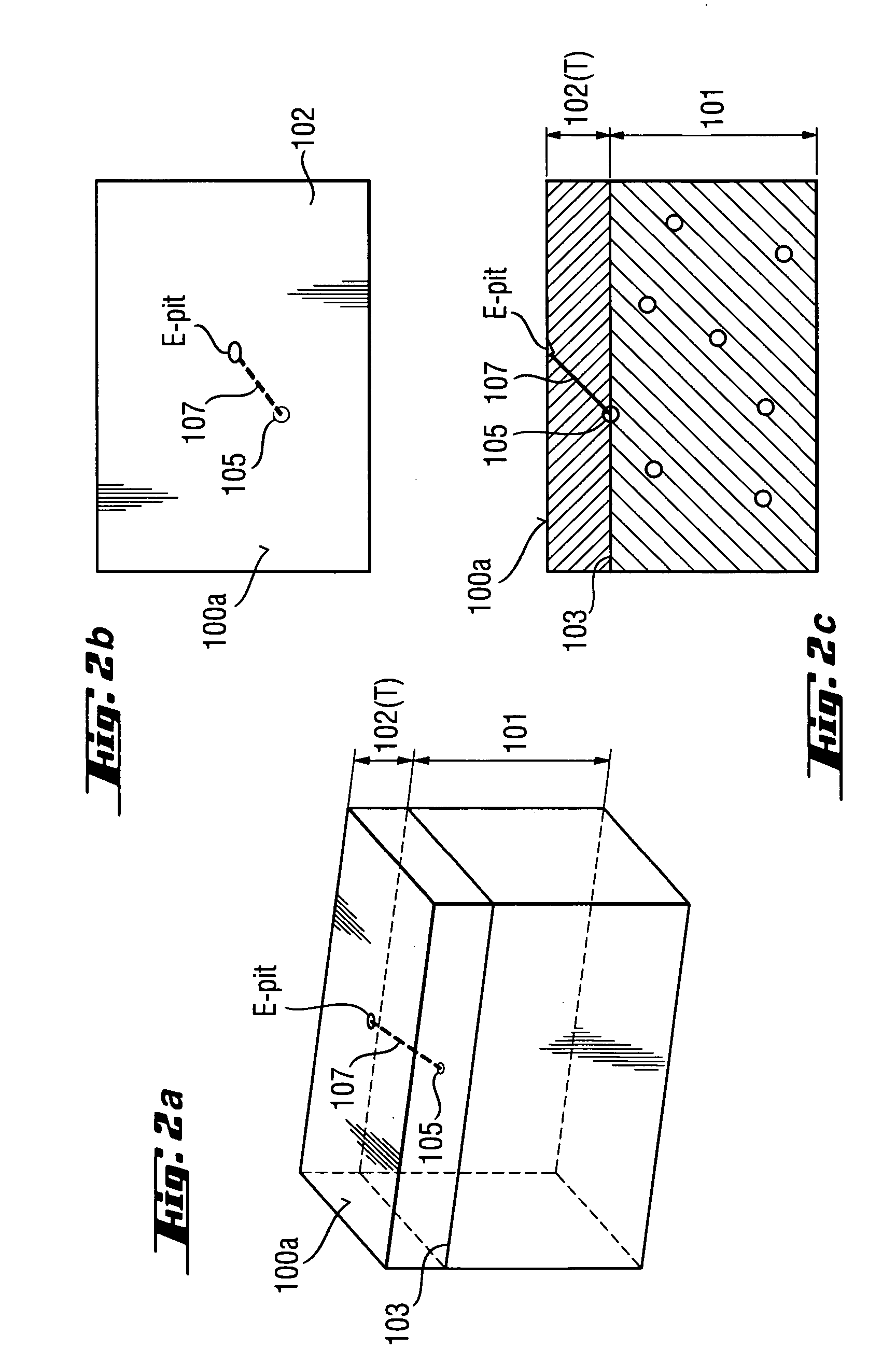Epitaxial wafer and method for producing epitaxial wafers
a production method and technology for epitaxial wafers, applied in the direction of crystal growth process, polycrystalline material growth, protective fluid, etc., can solve the problems of aforementioned mirror wafer without epitaxial deposition, less ig ability of epitaxial wafers, and inability to induce oxygen precipitation in epitaxial wafers during device processing
- Summary
- Abstract
- Description
- Claims
- Application Information
AI Technical Summary
Benefits of technology
Problems solved by technology
Method used
Image
Examples
Embodiment Construction
[0136] Now, examples of this disclosure will be explained below.
[0137] In the examples, the device for producing silicon single crystal is adapted to produce the silicon single crystal by the ordinary CZ method, and consists of the first pulling oven capable of typical pulling speeds and the second pulling oven adapted for additional cooling by a thermal shield plate for the purpose of heightening the cooling speed between 1100 and 1000° C. In embodying this disclosure, these pulling ovens do not need to be particularly limited to the examples herein but were only required to be capable of fulfilling the conditions of growth contemplated by this disclosure.
[0138] The silicon single crystal grown by the use of this device was a conduction type: p type (boron-doped) and crystal diameter of 8 inches (200 mm).
[0139] The addition of nitrogen was implemented by adding a base plate having a nitride film adhering thereto into a silicon melt. The addition of carbon was accomplished by add...
PUM
 Login to View More
Login to View More Abstract
Description
Claims
Application Information
 Login to View More
Login to View More - R&D
- Intellectual Property
- Life Sciences
- Materials
- Tech Scout
- Unparalleled Data Quality
- Higher Quality Content
- 60% Fewer Hallucinations
Browse by: Latest US Patents, China's latest patents, Technical Efficacy Thesaurus, Application Domain, Technology Topic, Popular Technical Reports.
© 2025 PatSnap. All rights reserved.Legal|Privacy policy|Modern Slavery Act Transparency Statement|Sitemap|About US| Contact US: help@patsnap.com



